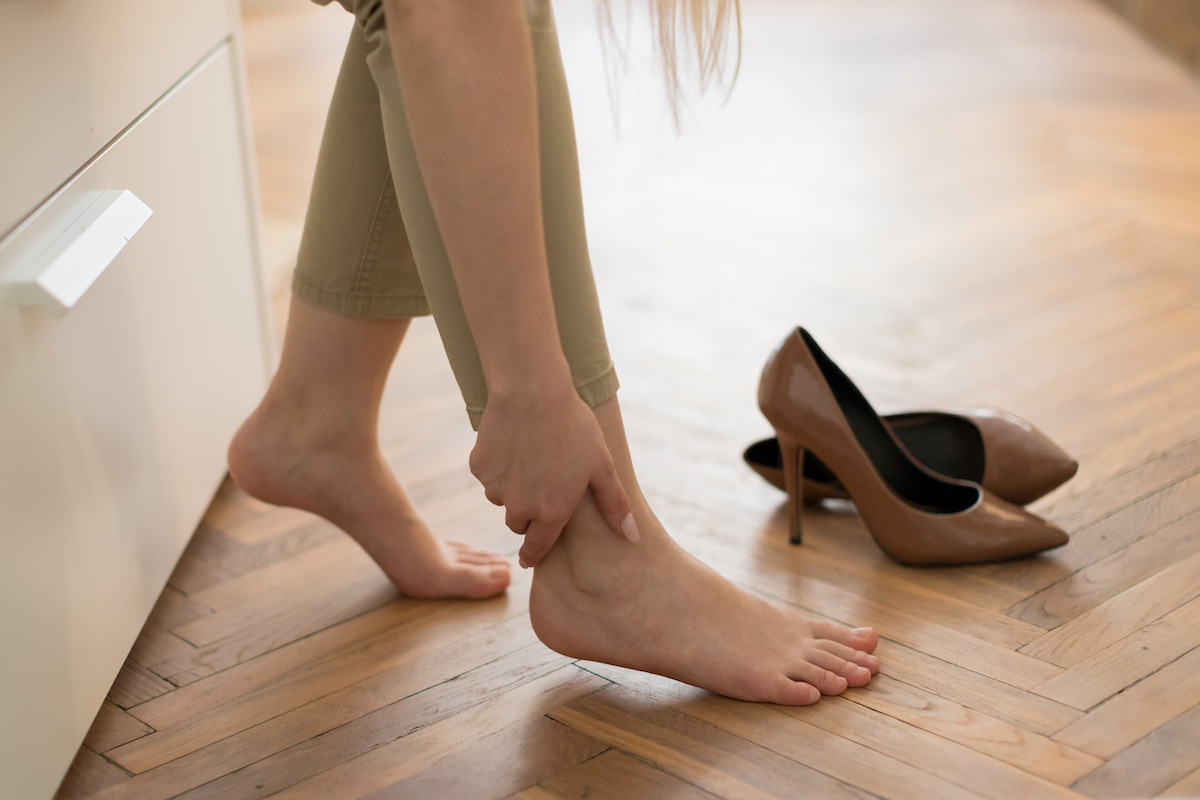
Occasional swelling of your lower extremities can be caused by everything from salty food to standing too long. Here’s how to tell if something else may be going on.
You may have experienced a brief episode of swollen feet and ankles after a long day walking or standing, particularly if it’s hot outside. But some of the reasons for feet swelling, ankle swelling or leg swelling — also known as edema — don’t have to do with being on your feet for too long. Here are some possibilities.
1. Venous insufficiency
Venous insufficiency occurs when the veins in your legs aren’t working properly, causing a buildup of blood.
“Because we stand on two feet as humans, the entire weight of the blood volume in our bodies is exerted on the veins in our legs, due to gravity,” says Kenneth Ziegler, MD, a vascular surgeon at Keck Medicine of USC and assistant professor of clinical surgery at the Keck School of Medicine of USC. “Our veins have valves that help counteract this force of gravity to keep the blood pressure in our veins low and to help blood return to our heart. Over time, the valves in our veins can become incompetent — meaning they no longer function properly and start allowing blood to flow backwards.”
In addition to swelling, venous insufficiency can cause varicose veins; leg pain or cramping; red, weepy or crusty skin (known as stasis dermatitis); hard or thick skin (known as lipodermatosclerosis); or a wound or ulcer that is slow to heal.
Treatment may include lifestyle modifications, like losing weight and making sure you move around enough to keep blood flow going.
Compression therapy — which includes everything from socks, stockings and athletic sleeves to wraps or complex pneumatic machines — can also help. “The key for all of them is that they provide external compression on the leg, in a graduated manner, so that more pressure is exerted on the ankle than at the knee,” Dr. Ziegler says.
Surgical treatments are also an option.
2. A blood clot
A blockage in your veins by a blood clot can prevent blood from flowing the way it should. When a blood clot occurs deep in the veins in the legs, it’s called a deep vein thrombosis, or DVT.
In addition to swelling, DVTs can cause pain and tenderness over the vein, as well as skin redness.
“With a DVT, blood can’t empty efficiently from the leg, and pressure builds up in the veins, which forces fluid into the surrounding tissues,” Dr. Ziegler explains. “In addition to obstructing blood flow, DVTs can also cause valve failure by plastering the valves open, causing long-term issues in flow even after the initial clot dissolves.”
If a DVT breaks loose, it can travel to the lungs and cause a life-threatening condition called pulmonary embolism. So, if you notice swelling with redness or pain, see your doctor right away — medications can help break up the clot, before it can do further damage.
3. Heart problems
If your heart isn’t pumping blood through your body as well as it should, you could have a backup of blood in your legs, ankles or feet. Heart disease or heart failure often comes along with other symptoms, such as chest pain, shortness of breath, coughing or wheezing, fatigue or a fast heartbeat; so if you experience these, contact your doctor. If symptoms are severe, seek emergency medical attention.
4. Pregnancy
Most women experience some ankle and foot swelling during pregnancy.
“The presence of a fetus in the uterus causes compression of the veins in the abdomen, which is the final destination of the blood before it reaches the heart,” Dr. Ziegler says. “This compression, in combination with hormonal changes that affect the vascular system during pregnancy, can cause this type of swelling.”
Excessive swelling in pregnancy, on the other hand, can be caused by preeclampsia, a condition marked by dangerously high blood pressure. If you have other symptoms as well, such as a severe headache, blurred vision, abdominal pain or a lack of urination, contact your doctor right away.
5. Liver or kidney problems
Chronic liver disease can lead to a buildup of fluid in the legs and abdomen, along with other symptoms such as yellowed skin (jaundice), redness on the palms of the hands or pale-colored stools. Likewise, kidney disease can be accompanied by swelling in the lower extremities, as well as fatigue, needing to urinate more often or difficulty concentrating. If you’re experiencing these kinds of symptoms, speak to your doctor.
6. Lifestyle factors
Leg swelling can also be caused by things other than medical conditions, and it can often be avoided or treated with lifestyle modifications. For example, avoiding salty foods can reduce the chances of water retention that leads to fluid buildup. In addition, reducing the amount of time you sit can keep your blood flowing well.
“Remain active rather than staying sedentary,” Dr. Ziegler advises.
During long plane or car rides, as well as during your workday at your desk, remember to get up and move around frequently.
Topics
